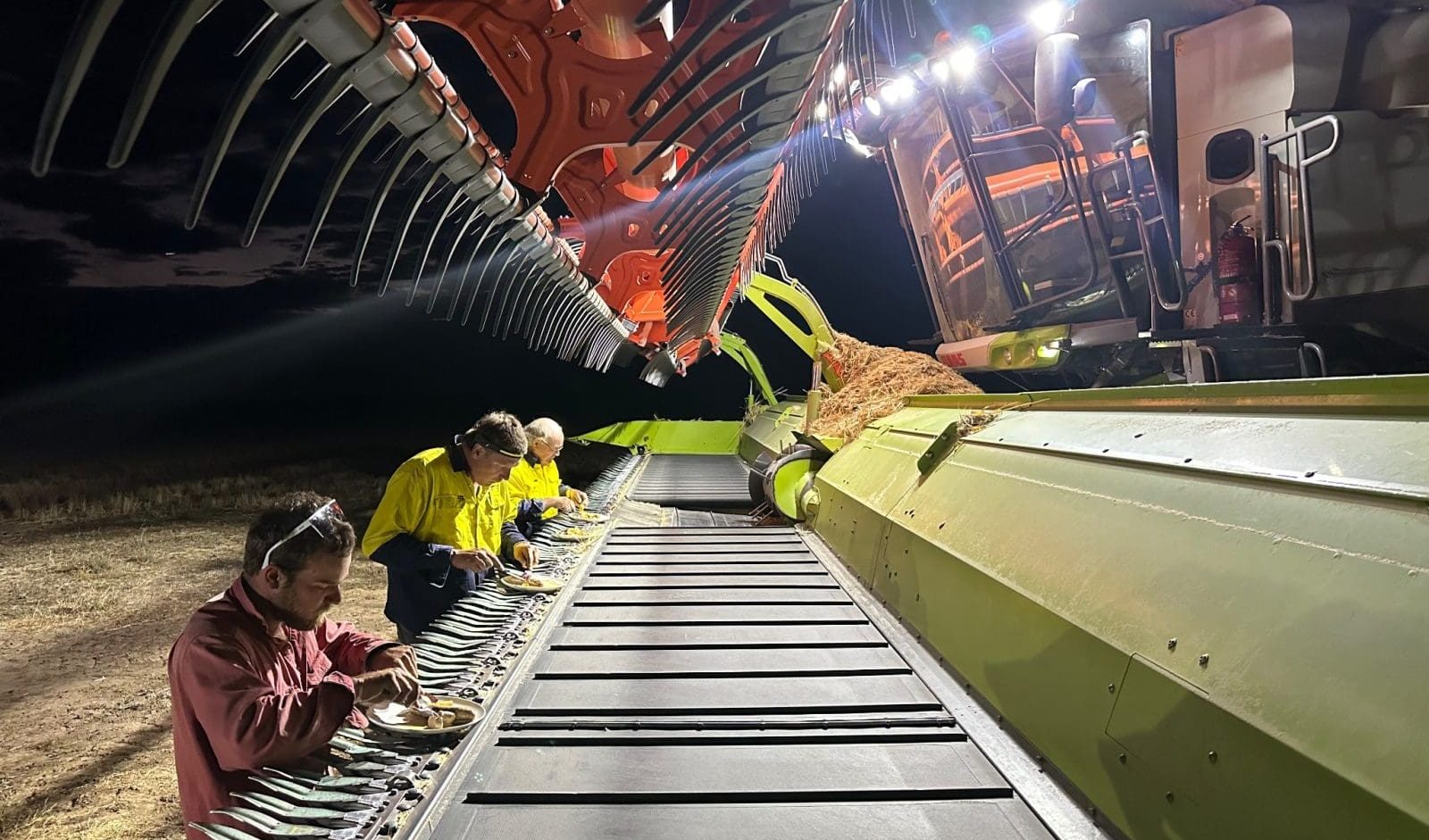
The harvest crew takes a meal break at Surat in Qld’s Maranoa region. Photo: Andrew Ruhle
TRADE in new-crop grain remains thin as growers take their time to market wheat and barley straight off the header, and consumers hope for some supply-side pressure once harvest gets going in higher-yielding areas.
In the southern market, the nominal barley price has dropped $15 per tonne, while wheat has held ground as prospects for average yields, and better in some districts, shape up in much of Victoria and southern New South Wales.
In the north, feed barley and wheat have softened a few dollars, with much of the feedlot business being confined to hay from just-baled crops.
| Today | Oct 5 | |
| Barley Downs | $460 | $465 |
| SFW wheat Downs | $460 | $465 |
| Sorghum Downs | Mar-Apr $435 | $430 |
| Barley Melbourne | $365 | $380 |
| ASW Melbourne | $420 | $420 |
| SFW Melbourne | $420 | $420 |
Table 1: Indicative prices in Australian dollars per tonne.
North’s dryland prospects slim
The chances of a big early crop of sorghum being planted in southern Queensland and northern NSW are looking slim as dry conditions continue.
This has pushed the prompt market for sorghum up to around $470/t delivered Downs packer, well above new-crop bids at $435/t.
“No-one’s going to hang on to sorghum into next year when that sort of money is around for it now,” one trader said.
Growers who normally grow sorghum over summer are not counting on doing so this season, and are therefore comfortable about storing wheat and barley on farm into next spring.
“If they don’t have sorghum coming in, they’ll have the room.”
Growers are delivering to bulk handlers, sending grain straight to feedlots and other consumers, or filling up their silos.
Others are also busy baling or delivering hay cut from crops with well below-average yield prospects, and selling at good money into feedlots.
Much of the northern NSW grainbelt is heading for maximum temperatures today of around 35 degrees Celsius, which will stop harvest activity due to fire risk in some districts.
Southern sales sluggish
Growers and traders have interpreted last week’s rain, which missed some paddocks entirely and dropped up to 40mm on others, as underpinning yields and improving quality in crops late enough to benefit.
“Everything’s a little bit softer with that rain,” one trader said.
“What it did was stopped the yield deteriorating, and also the quality should be okay in plant that are green enough to use it.”
Yields outlooks for wheat and barley crops range from below-average on the plains and outer slopes of NSW through to above-average on the inner slopes, and on the Victorian Wimmera.
“We’re certainly not going to get maximum yields anywhere.”
Low test weights and high screenings are an issue in some of the first barley crops to hit the bins, but wheat quality appears to be good.
“With El Niño in the background, the grower is not selling.
“I’d say it’s the least amount of grower selling we’ve ever seen.”
Windrowing of canola is taking place on most plains and outer slopes locations in NSW, with volume harvesting of cereals expected to start in the next week or two.
Get our free cropping news straight to your inbox – Click here

HAVE YOUR SAY